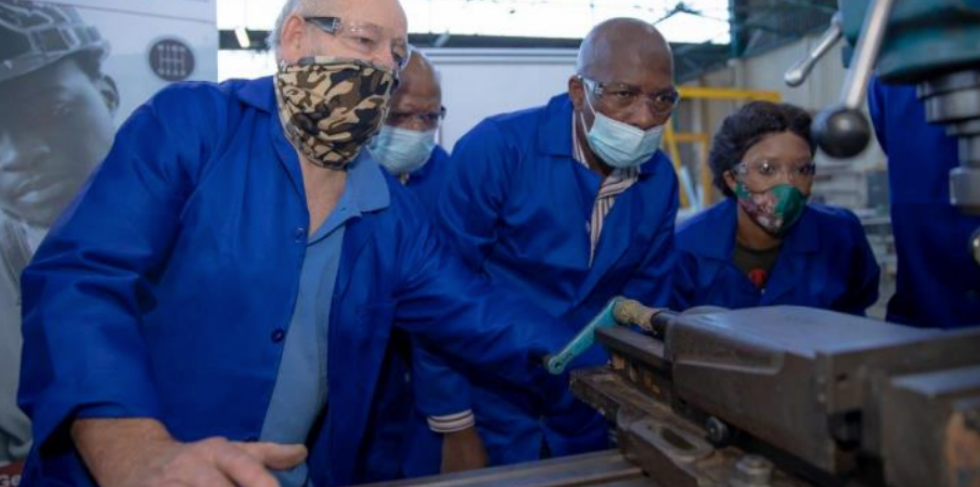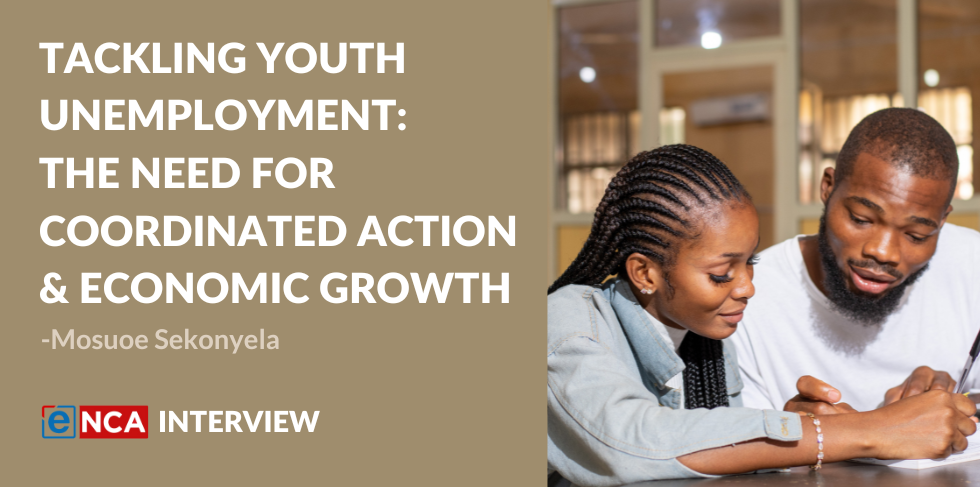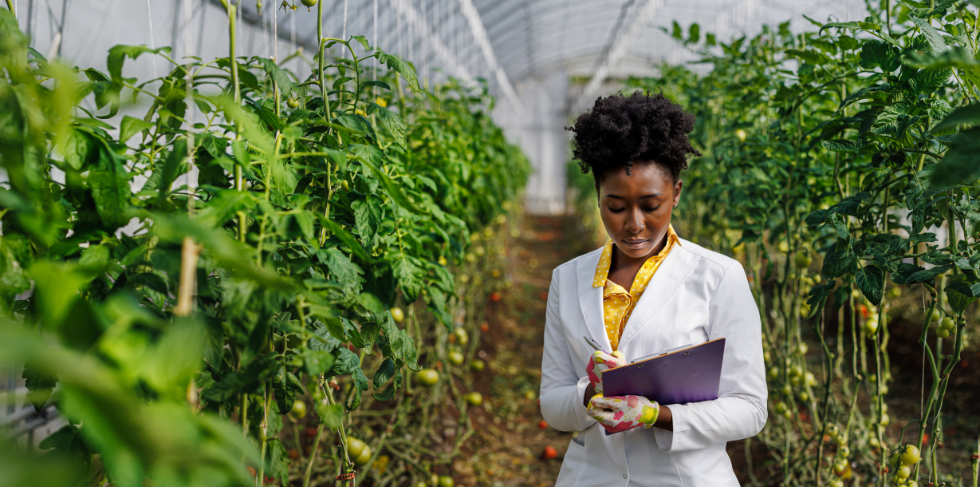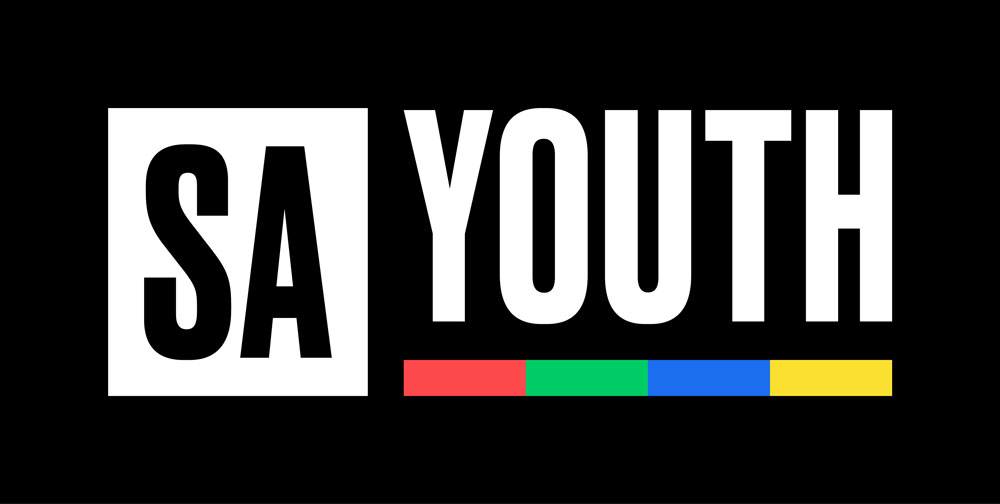Read an extract from the SA Labour Bulletin Vol 44 no.2 below, where Harambee Youth Employment Accelerator’s Chief Impact Officer, Sharmi Surianarain stresses the importance of partnership and shares our learnings supporting the Department of Basic Education teachers assistants programme. You can also download a copy of the report at the button below:
Read the full article below:
According to StatsSA’s most recent Quarterly Labour Force Survey, three out of four young workers cannot find a job or have stopped even looking for one. And even though GDP is starting to climb back up, employment is not seeing similar growth.
President Cyril Ramaphosa announced the Presidential Youth Employment Intervention (PYEI) in February 2020. PYEI is not acting alone. It’s bringing together a wide range of partners (public and private) like NPO Harambee Youth Employment Accelerator and Youth Employment Service (YES) and breaking down the silos between government departments to help achieve PYEI’s aims.
One of their partners, Harambee, stresses the importance of partnerships. “I think really our pandemic lesson has been that it’s never going to be enough even working at scale. Scale is great, but scale is not going to be enough. We have to work in partnership with others. It’s not about what we as individual organisations can do alone but what needs to be done as a whole, and what we can do in partnership with others.” Sharmi Surianarain, Chief Impact Officer.
The National Pathway Management Network (PMN)
The PMN is key to the project. It’s “about how we support young people to transition out of opportunities, whether learning or short-term opportunities … into other forms of learning in ways that actually allow them to progress,” says PYEI’s Lerato Shai. The PMN is a network of networks ensuring that young people have visibility of opportunities across network partners.
It includes an online platform, SAYouth.mobi and is like a one -stop shop where youth can register that they are looking for a job, lodge their CV, find out about job opportunities close to them and receive advice about their hustle. Access is data free and for those that don’t have smartphones, there is a toll-free line (0800 727272) to a call centre with trained youth workers. Or a person can choose to meet face to face at a labour centre at the department of employment and labour (DELP), or the National Youth Development Agency (NYDA) or Harambee or YES.
All of these separate organisations are linked into the PMN so that information can be shared easily. Before “they had to apply to five, six or seven different places which is expensive and frustrating,” says DELP’s Carmel Marock.
Other PYEI partners can also be accessed through this platform where these different services are offered:
• mPowa http:// www.mpowa.mobi/ A mobile app that gives information about employment, education, entrepreneurship where youth live and provides support
• National Career Advice Portal http://ncap.careerhelp.org.za/ is run from the Department of Higher and education and training and is an online self-help tool that helps students choose their career and make study decisions. (not data free)
• Tshepo 1Million – https:// www.thintimillion.co.za/Through ThintiMillion it provides basic digital skills on Microsoft as well as tips on building your business. (not data free)
Teachers’ assistants programme
At the end of 2020, Phase 1 of the 5- month teachers’ assistant programme needed 300 000 teacher assistants in the span of two weeks across 26 000 schools. “It really tested the PMN system,” says Surianarain, but it worked and 323 422 young people were placed in schools across the country and each earned R3500 per month less their UIF contribution.
The PMN was able to closely match youth living near the schools so transport costs to get to work would be minimal. Currently Harambee are finalising matches for Phase II of the programme “which will double these placement numbers before the end of the year.” Convenor of the COSATU Young Workers’ Forum, Xolani Fakude, says COSATU welcomes the teachers’ assistant initiative. “It opens up opportunities for young workers who potentially can also be educators” especially when, the number of teachers produced annually are “well below intended targets.”
Fakude stresses that the practice must be structured better and institutionalised and not remain as a temporary measure linked to Covid-19. Equally he says that government mustn’t ignore the qualified teachers in KZN that are currently facing an uncertain future after enforced education budget cuts of R6.4bn in the province.
Speaking from personal experience, 31 year old, Bulelwa Magalimela who was employed as a teacher’s assistant in Phase 1 of the project agrees with Fakude that the programme should be continued. She described her time working with the school kids as “a confidence booster” and as an experience that piqued her interest in working in the education/childcare field.
She has a matric but had never had a job before. However, when the contract ended, she received no support. “It shouldn’t just end like that,” she said. Meanwhile Shai says they are aware of the difficulty of transitioning as Magalimela experienced and are still working with the sectoral training authorities (setas) to identify “the different pathways, what is the skill set for those teachers assistants … so we can structure those transitions” so that people can progress. Even so, Shai acknowledges that a big challenge is that “labour demand is so low”. And that’s why another of their priorities is to work closely with industry to develop partnerships so that potential jobs can be surfaced.
Demand-led training in growth areas of the economy
Government has identified key areas of the economy where it expects jobs to grow: global business services (call centres), digital and technology, tourism, agriculture, and social services. Harambee has been active in helping the department of trade industry and competition (dtic), and sector body Business Process Enabling South Africa (BPESA) in growing jobs in global business services (GBS).
Partnering with government, civil society and the private sector a roadmap was developed that aimed to grow the sector to 500 000 jobs. In 2020, companies in India and the Philippines moved some of their jobs to this country and South Africa became the top destination for GBS says Surianarain.
The sector generates an average of over 3 000 good quality jobs per quarter, and since 2018, has created well over 40 000 new, highquality jobs that are accessible to young people because of low barriers to entry.
In the automotive component industry, a project managed by International Youth Foundation (IYF) called High Gear is working with industry body National Association of Automotive Component and Allied Manufacturers (NAACAM) and with the department of higher education and training (DHET).
They want to strengthen NATED qualifications with Elangeni TVET College in Durban and the East Cape Midlands College in Kariega, Eastern Cape so that students and employers “have more confidence in TVET qualifications,” says High Gear programme director, Colin Hagans.
Although not strictly part of PYEI, it will form part of the auto workstream being supported by DHET and the Presidency as part of PYEI and it shares many of its objectives. The government-supported South African Automotive Masterplan (SAAM2035) is aiming for 60% local content in the automotive sector by 2035, and NAACAM members have identified lack of skills as the key factor inhibiting this objective.
“Surprisingly many employers are not prioritising occupation-specific, or industry-specific technical competencies from TVET graduates,” says Hagans. “They want the strong foundations from TVET college graduates: foundational STEM (science, technology, engineering, maths), the knowledge of basic tools around mechanical and electrical engineering as well as higher order thinking capabilities and life skills or work-readiness skills.”
The project has identified one major problem with NATED qualifications in TVETS: they have no workshops which make NATED courses entirely theoretical. To compensate High Gear and its industry and TVET partners have co-created portable demonstration toolkits for lecturers to practically demonstrate mechanical engineering and electrical engineering principles. Lecturers are currently being mentored and it’s hoped that lecturers will start using them with students in trimester 3 with continued delivery next year.
Other demonstration toolkits are in the pipeline. Coupled with this will be ongoing workplace exposure for TVET lecturers, and regular workplace and employer exposure for students during their studies to increase student commitment to their studies. According to Hagans, “if students don’t see that employer visibility while they’re studying, the student might have very little confidence that this qualification is leading them to employment opportunities.”
To improve career guidance services for TVET students, the project is creating an interactive ‘career experience platform’ website which will highlight careers in the sector and young people working in those roles, while also providing practical sections on how to build a car and interactive games that simulate production line roles. There are plans to link the High Gear platform with the SAYouth.mobi platform and the PMN.
Although funding for the IYFfunded High Gear project ends in 2024, Hagans is confident that with NAACAM firmly on board in the project, it will be able to scale it beyond the life of IYF’s involvement using South African funding potentially from the SETA system.
Equally exciting says Hagans is that the “components manufacturing sector is a very good proxy sector for advanced manufacturing” which makes the skills easily transferable “across a large swathe of the manufacturing sector.”
Support for self-employment and youth entrepreneurship
Marock is the first to acknowledge that PYEI’s ideas on job creation have shifted since the start. “The reality is that there are simply not enough full-time employment positions to access.”
So PYEI’s argument now is that youth service shouldn’t be fulltime. Instead “you help people with their hustle while they are doing stipend programmes,” says Marock, “and then support them when they exit to move onto their enterprises.
The work on the youth service is only going to help young people if you are able to build local economies so there are opportunities for them to access.” However, building local economies so as to create jobs for the youth remains a challenge says Wits academic, Hannah Dawson.
You can’t escape South Africa’s history that viewed townships as reserves of cheap labour for businesses elsewhere and not vibrant economies on their own, she says. Compounding this is the minute size of the informal sector compared with the rest of the African continent precisely because of the monopolised and formalised nature of our economy which limits many informal business opportunities.
“It doesn’t matter whether you are in Sandton or Zandspruit, you still buy your bread from Checkers,” says Dawson. Surianarain concurs with Dawson on the small size of the informal sector in this country. [Youth] “are hustling,” she says. Harambee’s focus is on “how do we make sure that those hustles aren’t precarious and they aren’t going to push them into even more insecurity but they can actually sustain themselves and maybe get on the ladder to running a business or eventually a formal job.”
For the moment Harambee is focusing on three goals to help youth succeed at their own businesses. First is providing a WhatsApp chatbot to 17 000 budding entrepreneurs. It helps them “think of their hustle, manage their budget, track their expenses, those sorts of things.”
Second is to help them with simple things like filling in forms for banks, for tax and the like as well as linking them to resources/loans offered by the Small Enterprise Development Agency (SEDA).
The final one is helping them work on their market – “you can’t hustle if you don’t have a market. We are partnering with various partners including funders to understand this [township] space a bit better,” she says.
Vocational training and workplace experience
PYEI also works with the Youth Employment Service (YES), a business-led initiative, and with Harambee, to provide 12-month work experiences. More businesses are now using the PMN to access details on youth, their skills and their interests and recruiting them this way rather than processing thousands of job applications.
Businesses benefit by being able to improve their B-BEE scores while some are also able to apply for the Employment Tax Incentive to get a wage subsidy on any person they employ. YES’s website claims to have created 65 420 work experiences, hardly denting the unemployment figures, but according to Surianarain, the important thing is that they have received solid work experience which can give them a foothold into something else.
Harambee’s statistics show the vital nature of work experience: retention rates for one-year internships are 76% while those who work for six months are 90% likely to secure their job. In addition to opportunities for workplace experience in companies, government is also supporting young people to access experience through the Presidential Youth Service led by the NYDA with support from the Jobs Fund.
“I have been working in this space since I was a youth, about 26 years ago,” says Marock. “This is the first time that in addition to saying youth unemployment is important, government is saying, ‘here is money for 35 000 to do youth service, here is money to help people work across social partnerships and to make PMN work’, so it’s not just that the money is important, it’s signalling that we’ve got a chance to make this happen now.”
Source: This article was originally published in the SA Labour Bulletin vol 44 no 2. Access it here: https://www.southafricanlabourbulletin.org.za/wp-content/uploads/2021/10/salb-vol-44-no-2.final_.pdf.
Cover photo: Lecturers from Eastcape Midlands College taking part in work-integrated learning at Compuscan Manufacturing in August, part of the High Gear project (Pic: IYF / High Gear)





 Stay Connected
Stay Connected



